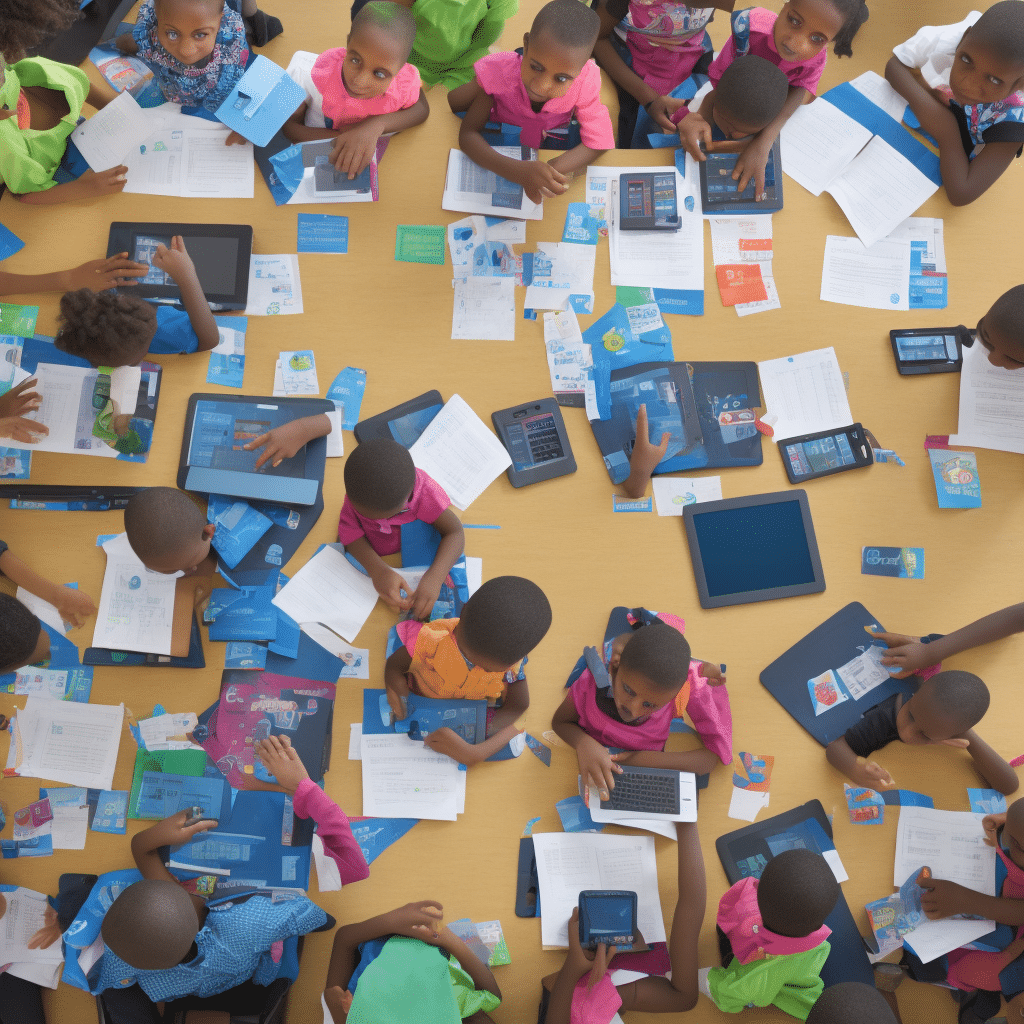In the age of digital technology, the dynamics of education are undergoing a paradigm shift. The traditional classroom method of learning is making way for more innovative, engaging, and inclusive digital learning experiences. In this article, we will explore how technology is democratizing education and providing accessible and inclusive platforms for all learners. We will delve into the various ways in which technology is bridging gaps and ensuring that quality education is not confined to the four walls of a classroom, but available to everyone, regardless of their geographical location, physical abilities, or financial constraints.
Tech Tools for Accessible Learning
The beauty of technology lies in its adaptability and flexibility. It allows educators to devise tailored learning strategies to cater to the varying needs of learners. Let’s take a look at how technology aids in making learning more accessible.
A voir aussi : Can AI and IoT Solutions Streamline Supply Chain and Logistics Operations?
Audio-visual learning tools are significantly transforming the learning experiences of students, especially those with special needs. For instance, assistive technology such as text-to-speech software can be life-changing for students with dyslexia or visual impairments. It enables them to comprehend and retain information more efficiently. Similarly, closed captions and subtitles can assist students who are deaf or hard of hearing.
There are also software and apps that transform classroom notes into digital text, making it easier for students with physical disabilities to keep up with the class.
A lire en complément : What Innovations Are Essential for the Next Generation of Wireless Communication?
Online Learning Platforms: A Boon for Remote Learners
Geographical boundaries can often limit educational opportunities. However, with the advent of online learning platforms, quality education has become accessible to students in the most remote corners of the world.
Online learning platforms offer a multitude of courses across various disciplines. These platforms use interactive interfaces to make learning engaging and fun. They employ a combination of text, audio, video, and animation to explain complex concepts in a simple and easy-to-understand manner.
On the other hand, virtual classrooms enable students to interact with their peers and teachers in real-time, irrespective of where they are located. This interactive feature adds a sense of traditional classroom ambiance to the digital learning experience, making it more engaging and effective.
Furthermore, with the availability of summarizing, note-taking, and bookmarking tools, online learners can easily revisit and revise the topics at their own pace, making learning more personalized.
Adaptive Learning Tools: Personalizing Education
Not every student learns at the same pace, and not every student finds the same method of teaching effective. This is where adaptive learning tools come into play. These tools use artificial intelligence to adapt the teaching methodology according to the student’s learning speed and style.
Adaptive learning tools can identify the areas where a student is struggling and adjust the difficulty level or change the type of content to make learning more effective. Similarly, these tools can also identify the student’s strengths and push them towards more complex problems, ensuring that they are not under-challenged.
These tools can also provide valuable insights to educators about the learning styles and challenges of individual students, enabling them to modify their teaching strategies accordingly.
Harnessing Augmented and Virtual Reality for Immersive Learning
Another exciting development in the field of educational technology is the use of augmented and virtual reality (AR and VR) for immersive learning. These technologies can create virtual environments that can simulate real-life scenarios, making learning more interactive and fascinating.
For instance, medical students can use VR to simulate surgeries, which can provide them with a risk-free platform to learn and practice complex surgical procedures. Similarly, AR can bring history to life by recreating historical events in 3D, making learning more engaging for history students.
Digital Literacy: An Essential Skill in the Digital Age
In the digital age, digital literacy is as important as reading, writing, and arithmetic. It is essential for students to learn how to responsibly use digital technology, how to distinguish between reliable and unreliable sources of information, and how to protect themselves online.
Schools are incorporating digital literacy into their curriculum to equip students with these essential skills. Teachers are using technology to teach students how to research, create presentations, make digital art, code, and more. Digital literacy also includes understanding internet etiquette, cyber safety, and digital citizenship.
The integration of technology into education has undoubtedly opened up new avenues for learning. It has made education more accessible, inclusive, and engaging. However, it is equally important to ensure that students are not overly dependent on technology and that they also develop essential interpersonal skills and critical thinking skills. Balance is key in this digital age of learning.
Technology and Teacher Training: A Crucial Aspect
Shifting the focus from students to teachers, we find that technology in education isn’t just about new tools for students. It’s also about empowering educators with the skills and knowledge they need to effectively integrate technology into their teaching practices.
In this light, the role of teacher training programs and professional development workshops becomes prominent. These programs are designed to equip teachers with the skills required to use various digital tools and platforms effectively. They also serve as a platform for sharing best practices and innovative teaching strategies.
The modern teacher is expected to be a facilitator rather than a traditional lecturer. They are expected to guide students in their self-paced and personalized learning journeys. This requires teachers to be familiar with a wide range of digital tools like learning management systems, virtual classrooms, adaptive learning tools, etc.
Furthermore, teachers also need to be equipped with skills to navigate challenges that technology might pose. This includes addressing digital equity issues, ensuring online safety, and managing screen time effectively for students.
Inclusive technology education doesn’t just mean providing students with devices and connectivity. It also means providing teachers with the resources, training, and support they need to incorporate technology effectively into their classrooms. This would ensure that technology is used as a means to enhance learning outcomes rather than just replace traditional teaching methods.
Conclusion: Technology as a Catalyst for Inclusive Education
In conclusion, we live in a world where technology is omnipresent. Its role in education is no longer a matter of discussion, but a reality we must embrace. While traditional methods of teaching have their merits, the integration of technology can make education more accessible, inclusive, and engaging. It can facilitate personalized learning and ensure that all students, irrespective of their abilities or location, have access to quality education.
However, for technology to truly democratize education, it needs to be inclusive and accessible to all. This requires efforts on multiple fronts – from developing adaptive learning tools and investing in teacher training programs to promoting digital literacy and ensuring the safe use of technology.
Inclusivity in education cannot be achieved overnight. It is a continual process that requires constant innovation, evaluation, and adaptation. However, with the aid of technology, we are definitely a step closer to ensuring that quality education is no longer a privilege for a few, but a right for all.
The potential of technology in transforming education is immense. However, it is important to remember that technology is just a tool. It is our vision of an inclusive educational ecosystem and our commitment to making it a reality that truly matters. In the end, technology is the enabler, but we, the human beings behind it, are the real change-makers.










